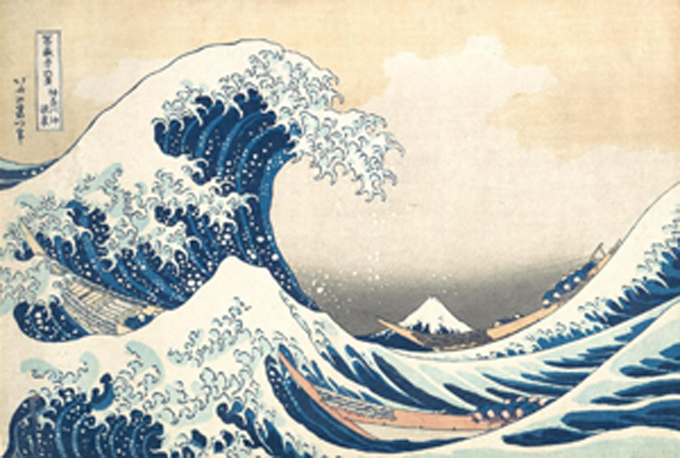
Often overlooked, visual art has great potential to engage students in an English language arts (ELA) classroom. By integrating art into your ELA lessons, you can help students improve literacy, build world knowledge, and boost critical thinking, speaking, and listening skills.
What’s more, weaving the study of fine art into your ELA lessons is a great way to differentiate instruction and reach a wide range of learners. Students of various abilities can access the visual language of art, providing important opportunities to gain competence in analyzing and discussing complex ideas. Striving readers and those who are learning to speak English especially benefit from this approach.
Let’s use The Great Wave off Kanagawa as an example. It’s one in a series of famous woodblock prints titled Thirty-Six Views of Mount Fuji, created by the Japanese artist Katsushika Hokusai in 1832.
If I were introducing this artwork to students in an ELA lesson, I would first ask what they notice about the image. Such close visual observation mimics early stages of close reading, drawing students in to examine and identify details and then stepping back to view the image as a whole. Then, I’d ask what more they’d like to know about it, using students’ innate curiosity as another point of engagement.
Next, I’d ask, what’s happening in this artwork? Who are the people in the boats, and what do their poses tell us about them? What types of shapes and lines do you see? How do they draw our eye around the scene? When they encounter a new text, students must first establish an understanding of the characters, setting, and plot structure. With fine art, we’re asking them to identify the foundational components first, recognizing how the parts contribute to a harmonious whole.
After that I would focus on artist’s technique. Just as I might prompt my class to describe an author’s use of language in a book, I might ask how specific artistic elements, such as color, texture, or composition work together to convey a message or support their interpretation of the work. Students learn to recognize artistic choices, similarly to how they identify and understand literary devices and their purpose in literature. Again, this is about practicing a key, cross-cutting skill in a way that may reach more students or deepen engagement.
Once we’ve analyzed the individual components, it’s then time to synthesize our knowledge. I would ask the critical question, what is the essential meaning of this work? We may not be able to put a precise finger on a single meaning, but can use what we know to make inferences. Students must support any claims with concrete evidence from the image, another important literacy skill.
Finally, it’s important to note that we don’t read books in a vacuum, nor do we look at art that way. A painting or text can build a student’s knowledge of a host of other topics. In the case of this Japanese woodblock print, students might examine the process of printmaking, the power of natural forces, or we might place this work in context in Japanese history and culture.
With this approach, you’ll be helping students expand their horizons and develop new skills. The National Assessment of Educational Progress 2016 arts assessment, which measures students’ knowledge and skills related to art, found that three-fourths of students couldn’t recognize obvious similarities and differences between two self-portraits by 20th-century artists. Far fewer students could create a self-portrait that sufficiently depicted their own characteristics.
Framing class discussions of reading material and fine art is not only enjoyable for students and teachers alike, but creates an awareness about art, strengthens concrete literacy skills, and contributes toward a powerful and effective ELA curriculum. I’d love to see more teachers give it a try.
Rachel Zindler is an art editor for the nonprofit Great Minds, publisher of Wit & Wisdom and Eureka Math. She previously worked in art museums and taught elementary and middle school students and teachers in New York City and Texas. She now lives in Austin, Texas and, when she’s not writing curriculum, is a practicing artist.